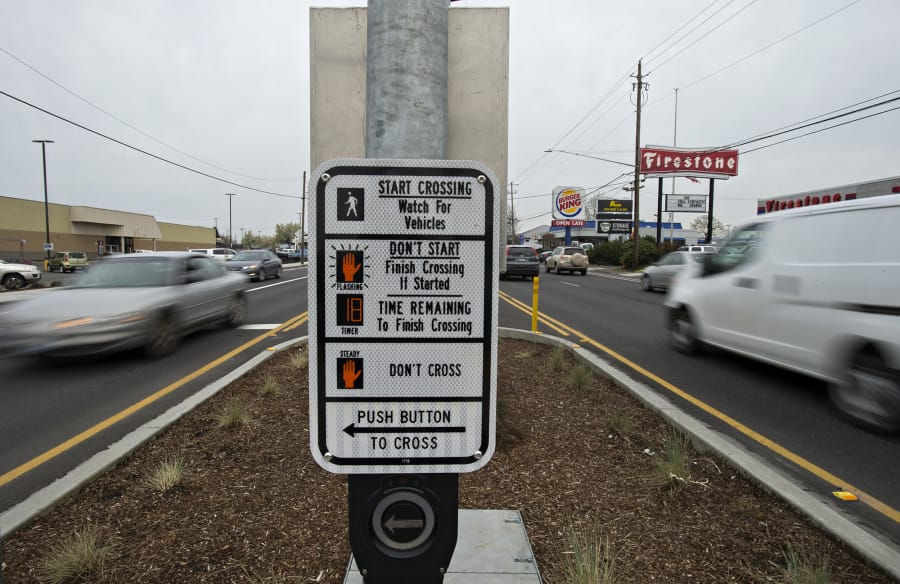Clark County is hoping to make its streets a little more complete.
The county is in the early stages of drafting an ordinance endorsing the concept of Complete Streets, which basically means that roadways should generally include infrastructure for pedestrians, bicyclists, disabled and elderly individuals and transit riders.
The idea has steadily caught on with urban planners after decades of car-centric development that’s contributed to sprawl. According to Smart Growth America, a Washington, D.C.-based nonprofit that works on issues of urban livability, more than 1,000 local and state governments have adopted some sort of Complete Streets policy, including the city of Vancouver.
Colete Anderson, program manager in the Clark County Department of Community Planning, said in an email that the county already has some policies in its comprehensive plan and design standards that support Complete Streets.
“So what’s different?” she said. “The county does not have a targeted ordinance that promotes ‘complete streets.’ ”
Neither the county’s design standards nor its comprehensive plan, which directs growth, actually uses the term “complete streets,” making it harder to qualify for grant funding, according to Anderson. Under state law, only local governments that have adopted a Complete Streets ordinance are eligible for funding.
Anderson said that some streets in the county were built long ago and to different standards. She said retrofitting these streets to new standards varies in difficulty, depending on issues of right of way, stormwater and others. She pointed to 192nd Avenue as meeting the definition of a Complete Street, with its bike lanes, sidewalks and stops for transit.
Eric Giacchino, the board president of Bike Clark County, said that he hasn’t read the ordinance but is supportive of the concept of Complete Streets. He said that when he previously served on the Clark Communities Bicycle and Pedestrian Advisory Committee about five years ago, the group was focused on just raising awareness of the concept.
“It’s been a long time coming,” he said of the ordinance. He said that traffic and parking will continue to be problems in Vancouver and Clark County. He added, “I think as we see the demographics of Clark County and Vancouver change, people will look for alternative modes of transportation.”
Clark County Council Chair Marc Boldt said that the ordinance originated with the county’s Aging Readiness Task Force, which looked into how well the county is prepared to support its older residents. He said the task force’s work expanded to the needs of the general population. He said that the ordinance will mean the county will do more to include sidewalks and crosswalks, while also minimizing cul de sacs and dead ends.
The draft of the ordinance states that as Clark County’s population increases, it will continue to see more traffic congestion and longer travel times. Studies have found that providing more travel options reduces congestion, according to the ordinance.
However, the ordinance states that many existing roadways, “where Clark County residents walk and bicycle, are incomplete and lack sidewalks or crosswalks, have lanes too narrow to share with bicyclists, and make no accommodation for transit riders or for people with disabilities.”
The ordinance further states that “trends in energy and transportation costs, air quality and public health necessitate a more comprehensive approach to mobility within communities that offer a greater variety of mobility choices and which is not strictly automobile-based.”
The ordinance cites a 2007 Washington State Department of Transportation survey that found that a lack of pedestrian and bicycle infrastructure is the primary reason why Washington residents don’t walk or bike more often.
The ordinance has already been considered by the Clark Communities Bicycle and Pedestrian Advisory Committee. Gary Albrecht, a county planner working on the ordinance, referred questions to the members of the committee, who did not respond to requests for comment.
Anderson said that the ordinance will be heard by the Clark County Planning Commission in May.




